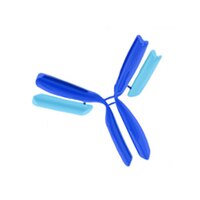SC1002 Sigma-AldrichAnti-Sox2 Mouse mAb (245610)
This Anti-Sox2 Mouse mAb (245610) is validated for use in Immunoblotting, Immunocytochemistry, Flow Cytometry for the detection of Sox2.
More>> This Anti-Sox2 Mouse mAb (245610) is validated for use in Immunoblotting, Immunocytochemistry, Flow Cytometry for the detection of Sox2. Less<<Anti-Sox2 Mouse mAb (245610) MSDS (material safety data sheet) or SDS, CoA and CoQ, dossiers, brochures and other available documents.
Recommended Products
概述
| Replacement Information |
|---|
重要规格表
| Species Reactivity | Host | Antibody Type |
|---|---|---|
| H, M | M | Monoclonal Antibody |
Products
| 产品目录编号 | 包装 | 数量 / 包装 | |
|---|---|---|---|
| SC1002-100UGCN | 塑胶安瓿;塑胶针药瓶 | 100 μg |
| Description | |
|---|---|
| Overview | Recognizes the ~34 kDa Sox2 protein in NTERA-2 cells. |
| Catalogue Number | SC1002 |
| Brand Family | Calbiochem® |
| Product Information | |
|---|---|
| Form | Lyophilized |
| Formulation | Lyophilized from 0.2 µm-filter sterilized PBS, 5% trehalose. |
| Positive control | NTERA-2 cells |
| Quality Level | MQ100 |
| Physicochemical Information |
|---|
| Dimensions |
|---|
| Materials Information |
|---|
| Toxicological Information |
|---|
| Safety Information according to GHS |
|---|
| Safety Information |
|---|
| Product Usage Statements |
|---|
| Packaging Information |
|---|
| Transport Information |
|---|
| Supplemental Information |
|---|
| Specifications |
|---|
| Global Trade Item Number | |
|---|---|
| 产品目录编号 | GTIN |
| SC1002-100UGCN | 04055977209341 |
Documentation
Anti-Sox2 Mouse mAb (245610) MSDS
| 职位 |
|---|
Anti-Sox2 Mouse mAb (245610) 分析证书
| 标题 | 批号 |
|---|---|
| SC1002 |
参考
| 参考信息概述 |
|---|
| Avilion, A.A., et al. 2003.Genes Dev. 17, 126. Graham, V., et al. 2003.Neuron 39, 749. Stevanovic, M. 2003.Mol. Biol. Rep. 30, 127. Kishi, M., et al. 2000.Development 127, 791. Uwanogho, D., et al. 1995.Mech. Dev. 49, 23. Yuan, H., et al. 1995.Genes Dev. 9, 2635. |







